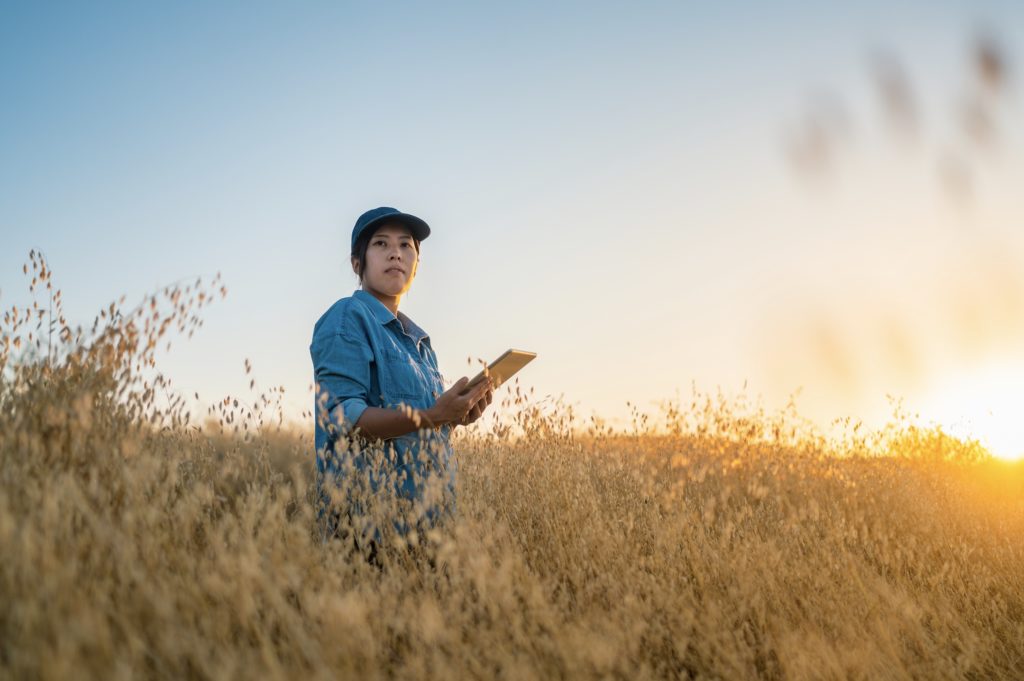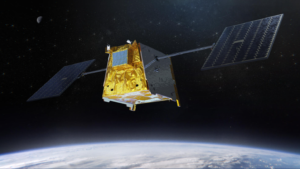
Powered by Earth Observation, Ag Lenders Deploy Next-Generation Credit Risk Evaluation and Monitoring to Drive New Business Opportunities
Sustainably feeding the world takes vast amounts of capital — for raising crops, for transporting them around the world, for seeing farmers through commodity price volatility, and that’s just for starters. This is why agricultural lenders are such a vital — if largely unseen — part of the agrifood supply chain. Increasingly, though, ag lenders may be costing themselves valuable business opportunities as farm economics evolve and traditional means of credit risk evaluation and monitoring fall short of the market’s needs.
Assessing growers’ creditworthiness by D&B credit reports or debt-to-asset ratios worked once, but as the financial needs of today’s growers increasingly outweigh the collateral they have available and big data continues expanding its role in the credit risk landscape, conventional measures are no longer sufficient to give lenders the confidence they need to provide valuable capital to growers.
Yesterday’s tools for credit risk evaluation and monitoring are no longer enough
The shortfall of relying on old-school methods of credit risk evaluation and monitoring in agriculture is that they fail to paint the full picture. For example, a D&B credit report or debt-to-asset ratio can tell you what happened in the past, but what it can’t tell you is what’s happening now, much less a credible projection of what is likely to occur in the future. As a result, these traditional models can often misrepresent an applicant’s true potential — or at the very least, they necessitate a wide risk margin.
As an agricultural lender, your goal is to put capital to work in accordance with its risk profile — not leave that capital sitting on the sidelines simply for a lack of data on the applications you receive. Especially with today’s strained global agrifood supply chain, the need to help more farmers get farming has never been more urgent. If conventional methods of credit risk evaluation and monitoring are creating barriers to growing your business, next-generation technology may hold the key to helping you identify high-potential lending opportunities while simultaneously minimizing risk exposure.
Reducing risk and increasing confidence with Earth Observation
Earth Observation is a state-of-the-art form of business intelligence that helps agribusiness leaders cost-effectively enhance and de-risk their operations and decisions through satellite-based monitoring of the Earth’s surface — and it helps agricultural lenders overcome the limitations of traditional credit risk evaluation and monitoring.
EarthDaily Analytics, through its EarthDaily Agro subsidiary, has a track record of more than 35 years as a leader in the collection and commercial application of Earth Observation data for agricultural analytics. Utilizing a combination of low-orbit satellites and powerful A.I. and Big Data, EarthDaily Agro provides scientific-grade imagery of the planet’s surface with daily frequency.
Using powerful software, this imagery is analyzed to obtain near real-time, ground-level data on environmental conditions, crop health and more — for both the area in focus and for competing producers and importers that will influence the crop’s ultimate market value. What’s more, EarthDaily Agro synthesizes today’s data with insights drawn from 30 years of historical data and extensive institutional knowledge so decision-makers are equipped with the right context to inform the best possible decisions.
Earth Observation gives ag lenders the confidence to be bold
Agricultural lenders that leverage Earth Observation gain a distinct competitive advantage when it comes to new lending opportunities. As the saying goes, knowledge is power — and with Earth Observation, agricultural lenders get both.
EarthDaily Agro gives agricultural lenders the intelligence they need to be bold. By working with the EarthDaily Agro team, lenders can outpace their competition with smarter credit risk evaluation and monitoring made possible by benefits such as:
- Continuous visibility: As growers increasingly rent, rather than own, the land they farm, traditional asset-based collateral models are limiting lenders’ opportunities. As a result, lenders are beginning to turn to new production-based collateral models, which use the anticipated value of a borrower’s forthcoming crop yield to secure the provided capital.
The challenge with production-based collateral, though, is the inherent risk involved in banking on the future, particularly in a notoriously cyclical industry. It’s for this reason that many ag lenders turn down production-based lending opportunities — even though they may carry potential to provide strong returns.
Using Earth Observation, though, lenders can minimize the risk of production-based collateral because they have access to near real-time data on each borrower’s crop health and progress. This ongoing visibility provides lenders with valuable control to act proactively in support of their investment. This ability to be nimble and responsive is one reason why Earth Observation positions lenders to take advantage of business opportunities that their competitors simply aren’t equipped for.
- Cost-effective scalability: Earth Observation isn’t the only means of crop monitoring. Other methods certainly exist — but the downfall is the limitations they come with. Often, lenders use drones or crop inspectors to verify the health of a borrower’s crops. The trouble with these methods, though, is that they require staff to be physically present at each field in question, an expense that can quickly add up — especially for an organization that is looking to put capital to work globally.
Similarly, while close monitoring of a farm or region may provide insight into the anticipated yield of a harvest, the reality of the global commodity market is that the market value of any given harvest will ultimately be determined by the success or failure of similar harvests down the road, across the country and around the world.
Because lending opportunities aren’t always centrally located, scaling up as a lender can be cost-prohibitive if you’re relying on old-school crop monitoring techniques. EarthDaily Agro’s satellite-based Earth Observation, though, monitors fields worldwide, providing a cost-effective way to confidently assess credit risk or value an investment no matter where the recipient or their competitors reside — and that scalability gives lenders a valuable leg up on the competition.
How to choose an Earth Observation partner
When it comes to Earth Observation providers, agricultural lenders have options. A number of Earth Observation providers offer either broad coverage, high frequency or scientific-quality data — but EarthDaily Agro combines all three. What’s more, EarthDaily Agro’s team of specialists has deep expertise in the agribusiness market with local agronomy experts across North America, South America and Europe.
Starting in 2023, EarthDaily Analytics will supercharge its capabilities across all verticals with the launch of the EarthDaily Constellation of satellites, the world’s most powerful global change detection and analysis system. In a unique combination of satellites monitoring 23 spectral bands, the constellation will collect scientific-grade and analytics-ready imagery of the Earth’s land mass captured every day, at the same time of day and made available within hours through a cloud-based platform.
To learn more about how geospatial analytics from EarthDaily Agro can make more possible for your business, contact our team.
About the author
Don Osborne is President, CEO and Director of EarthDaily Analytics. He is a seasoned technology executive, having spent more than 30 years in the satellite, space and aerospace industry.


